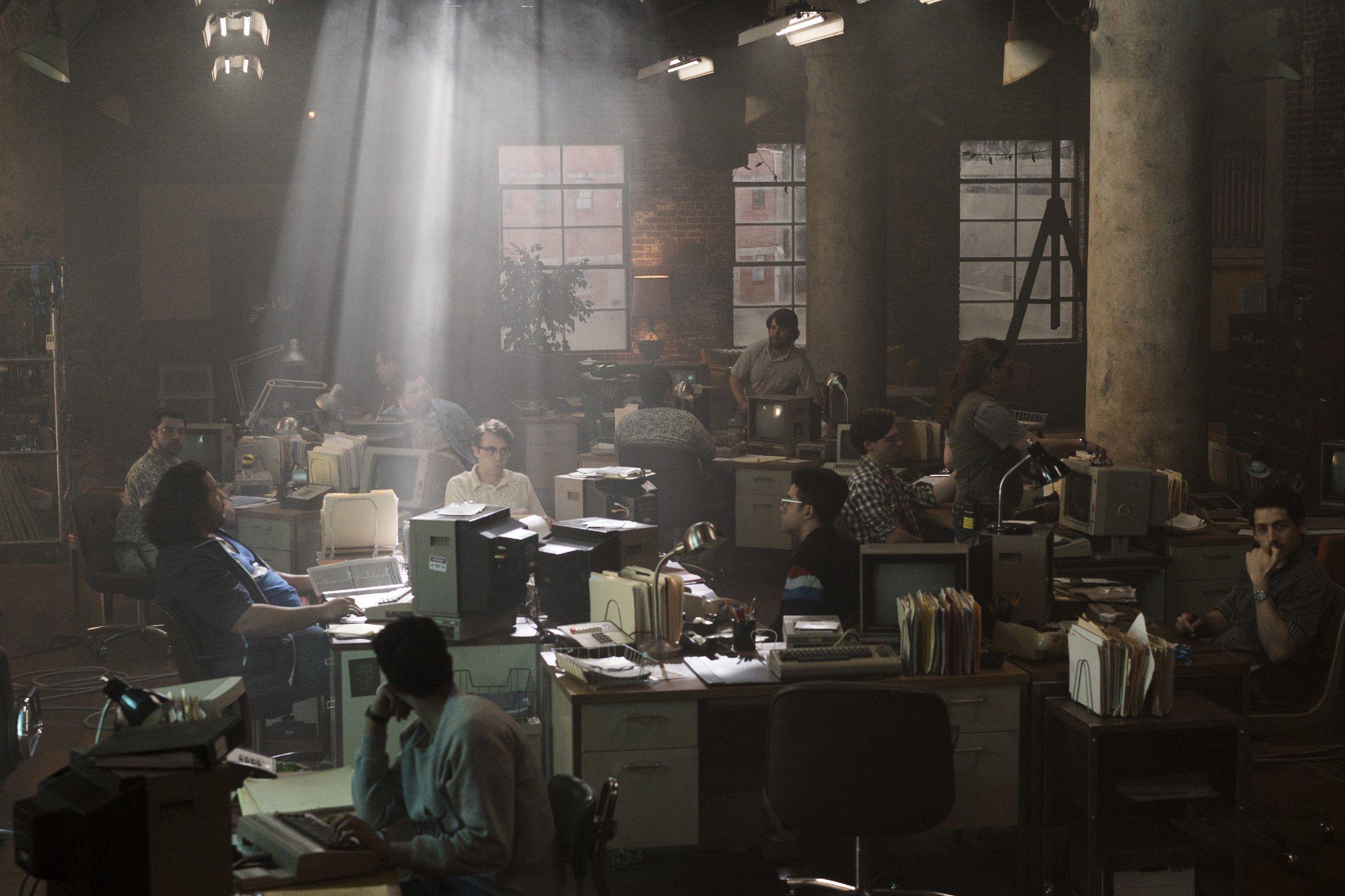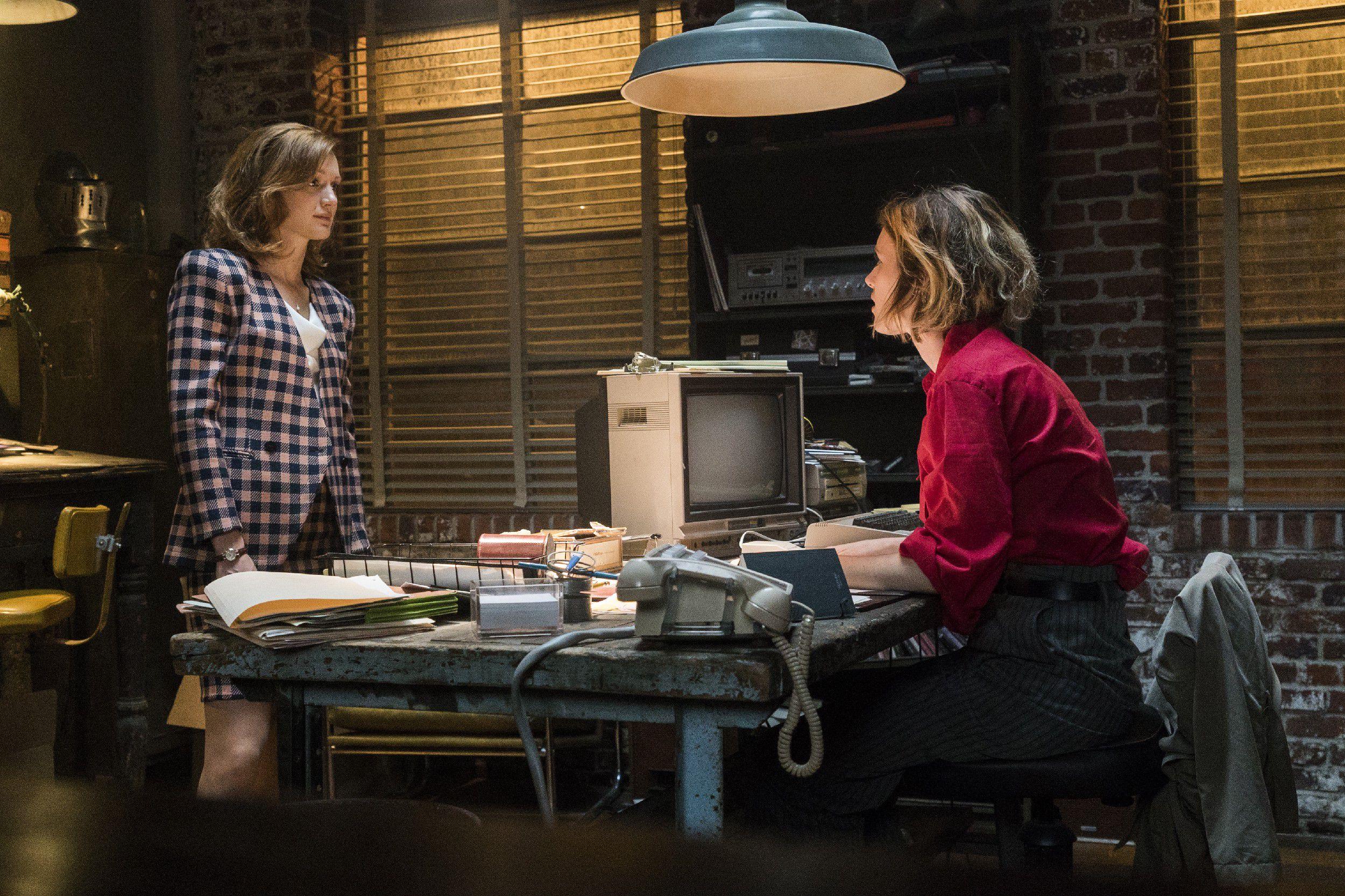You may not have heard of the Quadruplex, but it was once a machine of great importance. The reel-to-reel recording device — whose late iterations stood at about 5 feet tall and 4 feet wide — revolutionized broadcasting in the 1950s by giving the TV industry a quick and low-cost method for recording a show as it aired live. But within just two decades, the giant magnetic-tape-based apparatus was replaced with more efficient technology.
This fact was painfully clear to set decorator Jess Royal when she embarked on a journey to find the hulking piece of broadcasting equipment last year for Christine, a movie set in 1974 about a female newscaster in Sarasota, Florida.
“It was such a weird, temporary time,” the 34-year-old, who now works on the set of Stranger Things, told me. “Advancements were so fast that they found better ways to do things not long after 1974. Maybe they sat in storage rooms for a while, but they were in dumpsters probably by the late ’80s.”
Her go-to rental house, History for Hire, didn’t have one. None of the prop vendors in Los Angeles did. She thought about hiring someone to re-create the machine, but knew it’d be difficult to fake considering the director insisted upon long, Birdman-esque shots of characters operating the equipment in the newsroom. So she and a coworker went on separate scavenger hunts: he to a town outside Indianapolis where a prepper and self-proclaimed Ted Kaczynski fan claimed to keep a bunker of old electronics, and she on a road trip through south Georgia, knocking on the doors of local TV stations in towns that were booming in the ’60s and ’70s.
After days of searching, she encountered a young TV station employee who said he had what she wanted. They jumped in his truck and drove to a swampy transmitter site, where the building’s roof was caved in and mold had overtaken most of the space. There, in a dry corner of a room, was a cornucopia of ’70s-era broadcast equipment: old character costumes from Saturday-morning kids shows, huge pedestal cameras, soundboards, monitors, and the Holy Grail — two well-preserved Quadruplex machines. Royal was so overcome with excitement that she gave her companion an Elaine Benes–esque shove.
“Learning about it, not ever really seeing it in person, and then going into some place with a flashlight and rubber boots — it was like finding Bigfoot,” she said.
Royal’s story is one of many in the entertainment industry, which — thanks to obsessive online forums that pore over a production’s every anachronism — requires increasingly discerning and dedicated prop hunters. Nowhere is this more apparent on set than with the technology that surrounds actors. Mad Men inspired its dedicated watchers to complain that the Sterling Cooper office’s IBM Selectric typewriters were a year ahead of their time, and the numerous period-specific shows that followed have only had to be more diligent.

Now, as television is trending toward ’80s-era creations like Stranger Things, The Americans, Halt and Catch Fire, and The Goldbergs, decorators are finding it increasingly difficult to fill their sets with gadgets that won’t cause persnickety fans to froth at the mouth. It’s a very first-world Hollywood problem, but a fascinating one. The breakneck pace of consumer technology development — the same thing that has brought us generational inside jokes and those viral “Kids React to Old Computers” videos — is trailed by landfills full of mass-produced gadgets. They are not made of metal or wood, but a beige and flimsy plastic that tends to yellow over time. As the production designer for the first two seasons of The Americans, John Mott, put it, the ’80s “were also a time where design had kind of lost its way.” As a result, gadgets from that era don’t tend to be on most collectors’ radars, even if they’re in high demand in the entertainment industry.
“It’s an interesting buying habit that shifted at one point,” Cory Lorenzen, the production designer for The Goldbergs, said. “It’s hard to find any of this stuff that we’re looking at from this era that was made to last longer than 10 years.”
What that means for Lorenzen — whose job is to acquire the type of hair dryers, electric shavers, personal computers, and game consoles that a middle-class family might have owned in the ’80s — is that there is no exact science to his daily routine. Because television works on tight deadlines, he is almost constantly skimming the internet for items that he’ll need for the next Goldbergs episode. After doing research (some preferred publications of set designers include old Sears catalogs and RadioShack PDFs), he’ll call a prop house. If he strikes out there, he’ll check sites like eBay, Etsy, or Craigslist. Often, his searches spiral into their own sorts of internet rabbit holes, in which the 38-year-old will trawl online fan forums dedicated to arcade games or old computers for leads.
Even if he finds what he’s looking for, there are no guarantees it’ll arrive in one piece. In the first season of The Goldbergs, Lorenzen was able to track down an Apple II computer with a modem that had survived the past few decades relatively unscathed. The vendor sent it to him on a train that ended up getting derailed. When they got the package, the computer was trashed.
“We didn’t have any alternative at that point,” he said. “So we actually took the whole thing apart and basically repaired it the same way you would a car. We filled all the cracks and problems, we had to repaint it perfectly to match. We basically had to spackle and put together this computer to get it to look new.”
Though personal computers are hard to find, much larger, bulkier pieces of equipment (like, say, a Quadruplex) are especially elusive. When Lorenzen needed to acquire a Mitsubishi MovieVision TV, a heavy, sprawling television encased in a wooden frame and equipped with a cabinet to house a projector, he was sure that they had all been dumped in landfills years ago. It was only after he contacted a television repair company that he discovered that a woman in an Orange County convalescent home had kept hers in excellent condition all these years. Lorenzen’s staff drove down to pick it up, trading her a new TV for the ancient device.
“I’m surprised, just from doing this show, how much this old tech is still a part of these people’s lives, and has been for so long,” he said. “It’s so ingrained in them that they don’t even think to change or upgrade it.”


‘The Americans’ (FX)
Often, if set designers can’t find the real thing, they will instead manufacture a model of it based on photos from the era. In Season 2 of The Americans, several scenes offer a peek into the early makings of the internet, which included the PDP-10, a mainframe computer that many university labs used in the 1970s, and an Interface Message Processor, which helped connect participating networks to ARPANET. Another scene showed the Russian equivalent of that same computer lab. All of them, says Mott, were simply easier to re-create in the show’s manufacturing department.
“There were only just pictures of them. You couldn’t buy them or find them,” he said. “So we made it out of plywood, large pictures pasted on the window with little light structures behind it. From quite close, maybe 2 or 3 feet, it looked like it was full of little tubes.”
In Halt and Catch Fire, the AMC show that chronicles entrepreneurs in Texas’s Silicon Prairie during the early-’80s personal computing boom, the issue of sheer numbers can sometimes force a set designer to commit to using anachronisms. The show’s fictional offices of Cardiff Electric are populated with Zenith Z-120 PCs. On the show, they are shown connected to a mainframe, but in reality they stood alone. “When you need 19 of them, you’re excited to find what you can find that dates appropriately,” Chris Brown, the show’s production designer, and the Mad Men veteran who withstood the aforementioned typewriter scandal, told Wired in 2014.

Despite the imminent threat of online commenters, set designers must often settle for what they can find, and work backward to make items appear functional onscreen — a process that Nathan Haskell, the sales manager at L.A. prop vendor the Hand Prop Room, calls “Frankensteining.”
“People can be like, ‘Hey, I need this 1984 IBM computer,’” Haskell said. “That’s not a problem. The problem is when they want it to work and then work off of an MS-DOS program and print off of that big giant paper with the perforated sides and that stuff.”
Perhaps only more daunting than re-creating an era of forgotten ’80s gadgets, however, is taking on a more recent era. Designing for 2005, for instance, is actually more difficult. Thanks to a stronger commitment to recycling electronics and a society based on planned (or subconscious) obsolescence, it’s a bigger challenge to find 10-year-old gadgets than it is to find 50-year-old gadgets.
“Technology has moved on so much,” Mott said. “All that stuff is basically getting recycled. Nobody’s going to buy a ’90s cellphone. That’s just trash.”